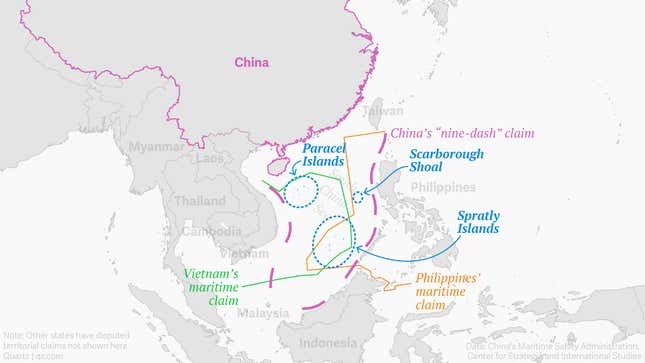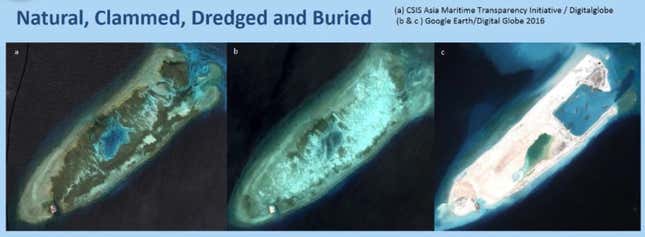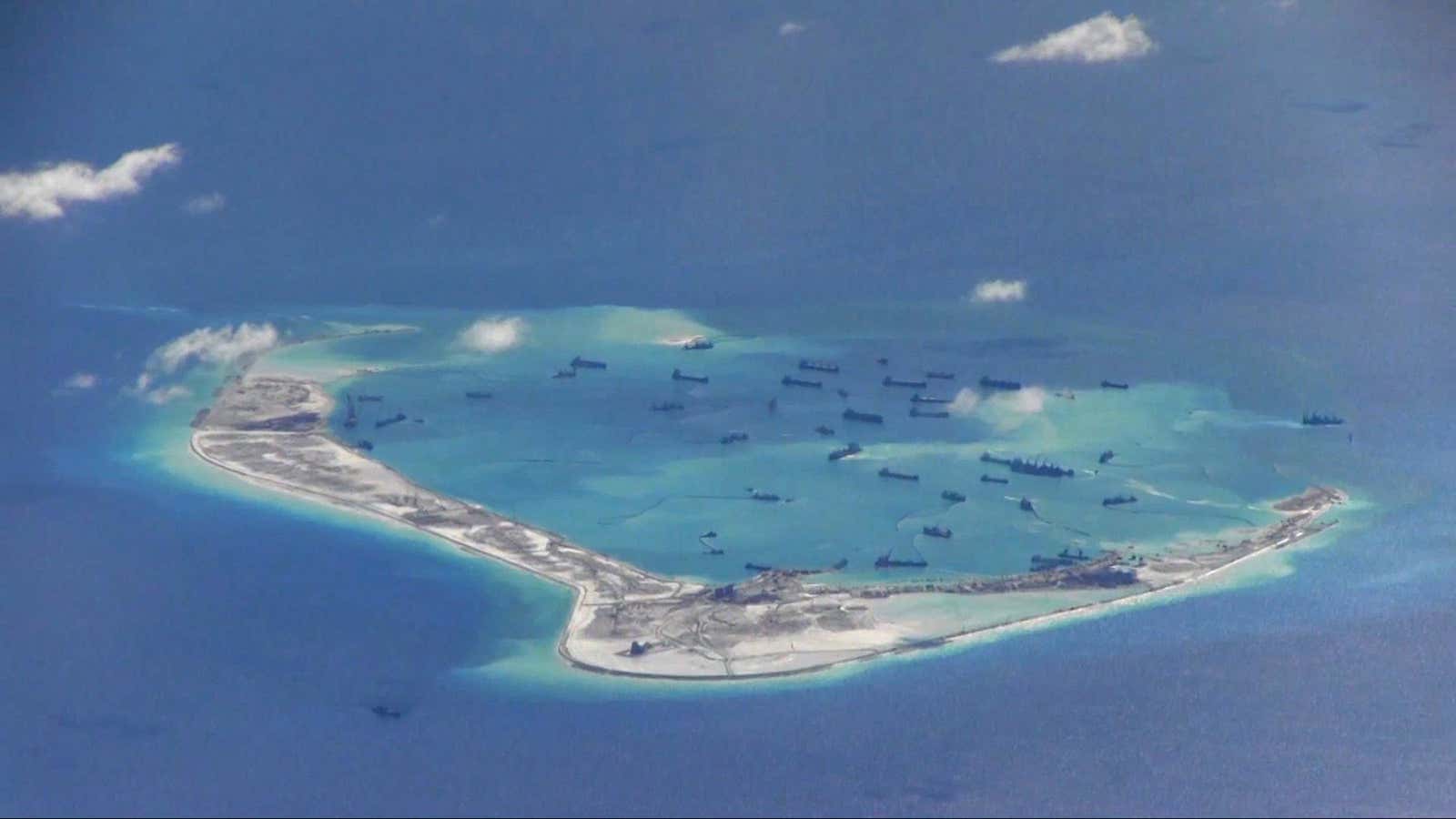Tensions are high on the seas of Southeast Asia, but it is the war beneath the sea that matters more in the long run.
Amidst the fracas between China, the Philippines, Vietnam, Taiwan, Malaysia, and Brunei over claims in the South China Sea, it’s the fish and coral that are the silent victims. With every move made to bolster their claims over the region, these countries, particularly China, are slowly destroying its unique marine havens.

Earlier this month, a United Nations tribunal rubbished China’s claims to most of the sea. That, however, has only seemed to have made China’s resolution stronger to continue building islands, over-fishing the seas, and executing military drills as a way to flout the ruling.
The region is well known to hold more than 7.5 billion barrels of oil, and be part of shipping routes connecting the Pacific and Indian oceans that see some $5 trillion in trade a year. Lesser known, though, it is also home to 76% of the world’s coral species (some 500) and 37% of the world’s reef-fish species (some 2,500).
In a conference on the South China Sea on Jul. 12, Edgardo Gomez of the University of the Philippines called it a “marine paradise.” In economic terms, Gomez estimates that coral reefs provide a value of $350,000 per hectare per year, more than any other natural ecosystem including tropical forests, rivers, and lakes.
More than 40 square miles of coral reef have been destroyed by giant clam poaching, which uses boat propellers to hack apart reef and pry out the giant bivalves, a delicacy in China. Another 22 square miles have been destroyed by island-building activities.

At the same conference, John McManus, professor of marine biology and fisheries at the University of Miami, estimated that human activity had destroyed some 16,200 hectares of coral reef, 98% of which has been done by China alone. That would put the economic damage to the region at nearly $6 billion per year. China disputes these scientific claims, saying that it does little ecological damage to coral reefs.
Beyond the damage to the reef, the lack of any agreed-upon regulation has meant that each country has been doing its best to exploit the fish stock in the South China Sea to the point of destroying it altogether. “When we have a present fisheries crisis and a looming fisheries catastrophe, you shouldn’t go to one of the most important places for fisheries and destroy it,” McManus told Nature.
Yet, there are ways out. Perhaps the environmental disaster will bring nations together to find a workable solution. One solution that McManus has advocated since the 1990s is to turn part of the South China Sea into a marine park.
“It’s the only way to avert a fisheries collapse. It will have a good effect on efforts to avert military action,” he says.
The tribunal decision makes him slightly more optimistic. He now gives the park a 1 in 10 chance of happening rather than 1 in 100.
